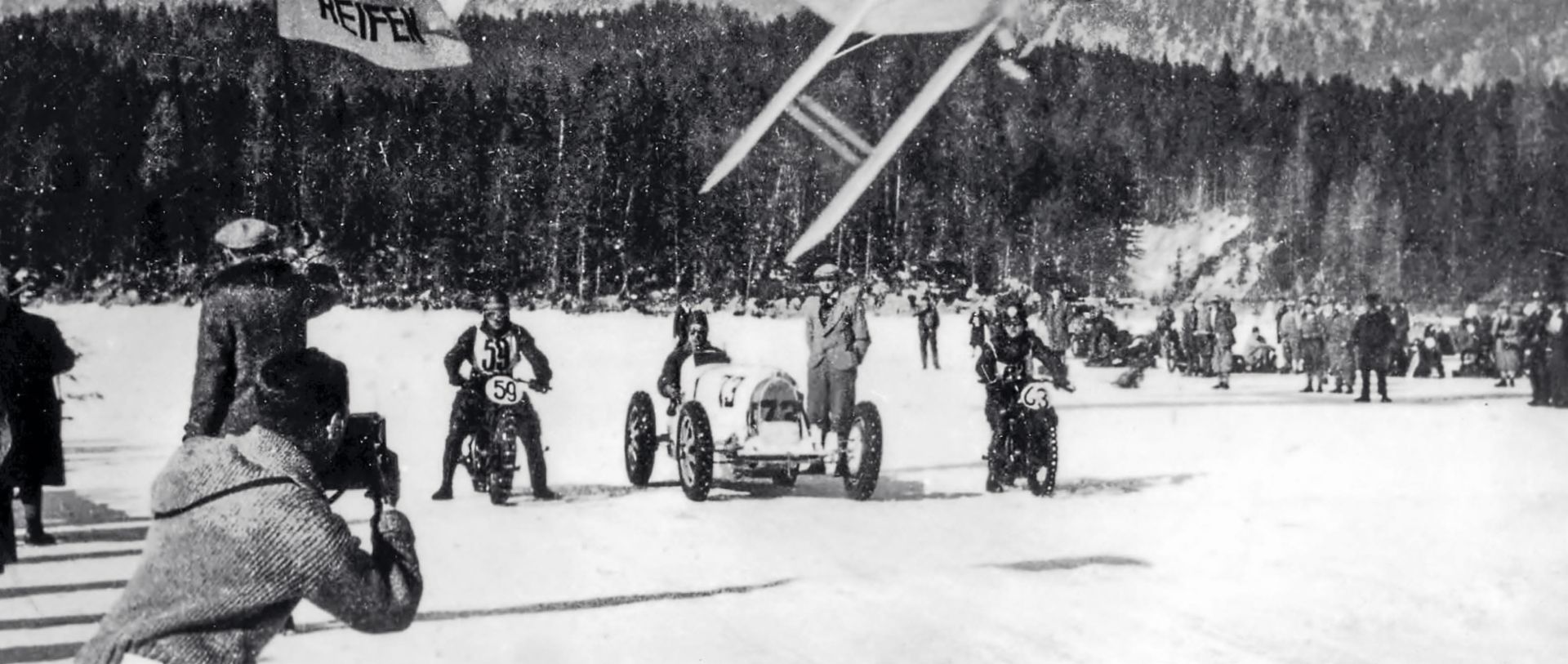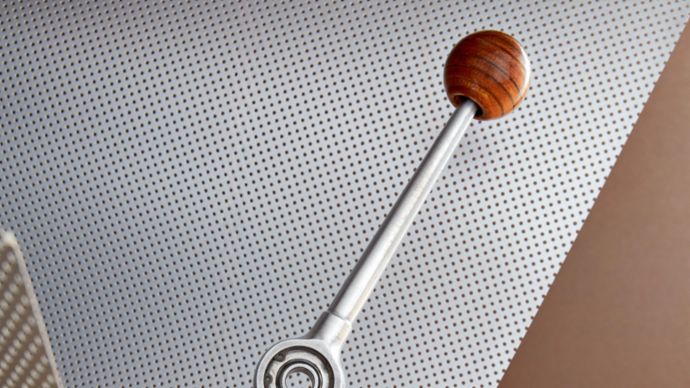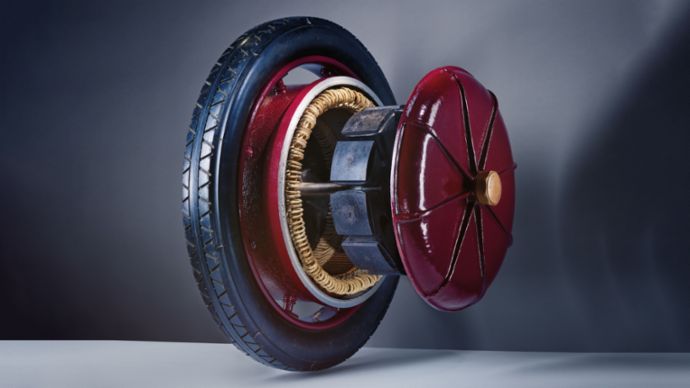Burning Ice
Hot races with skiers in tow. Racing festivals in honor of Ferdinand Porsche were held on frozen Lake Zell for more than twenty years. This grand tradition lives on.
A tradition from the far north found its way to the Austrian Alpine region. Skijoring comes from Scandinavia and means pulled or towed skis. Farmers had themselves towed by their horses or dogs as a means of transportation. This rural practice later became a sport, and daredevils even had themselves towed by motorbikes. That was the case in the winter of 1937 on a specially prepared circuit on frozen Lake Zell. In a picturesque Alpine setting, visitors enjoyed a breathtaking spectacle with a festive atmosphere.
The ice races had everything that makes motorsports so appealing.
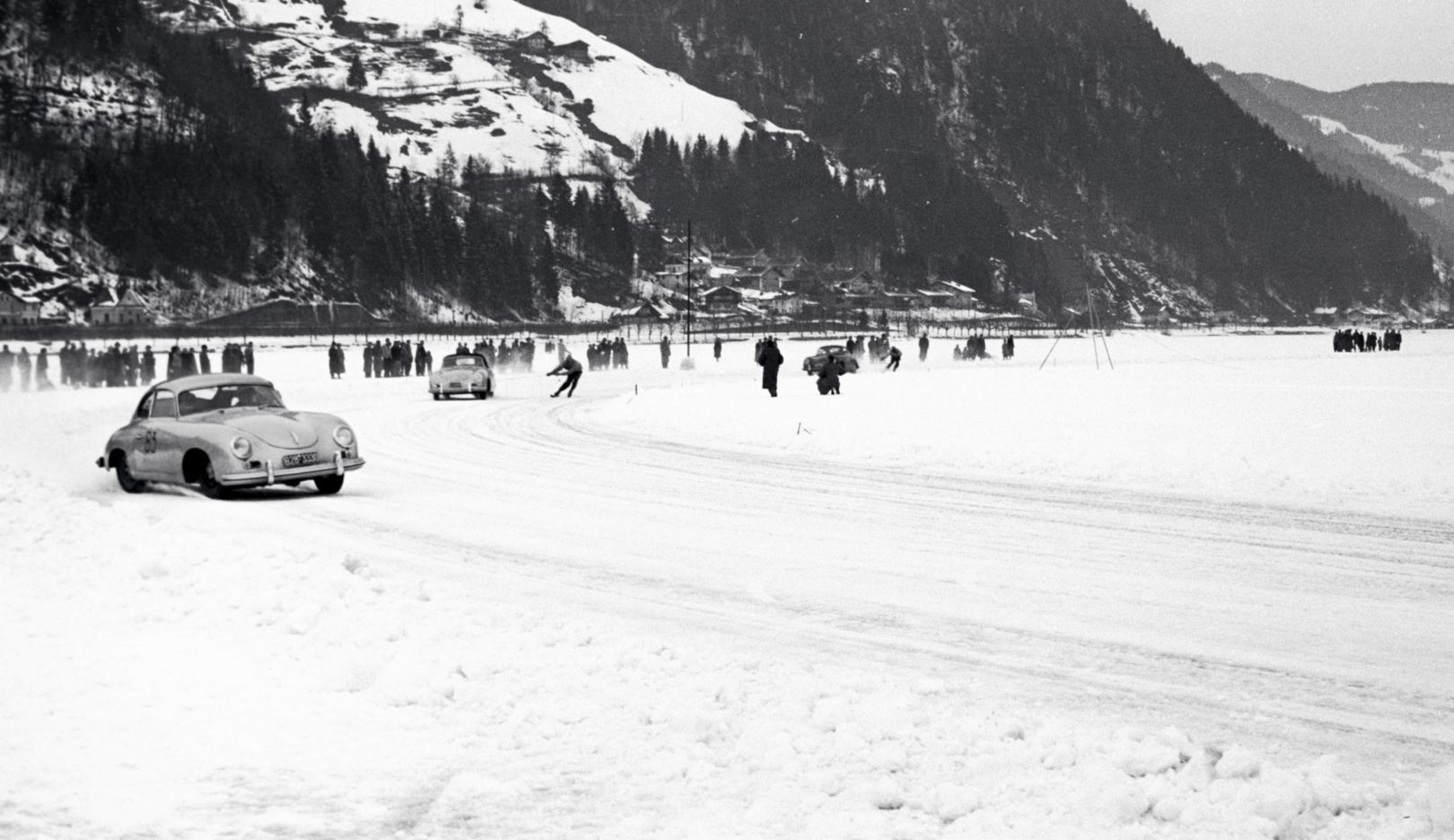
Skijoring:
Each race consisted of three laps at breakneck speed.Fifteen years later, Austrian racing aficionados were inspired by that notable event to hold the first Professor Ferdinand Porsche Memorial Race on February 10, 1952.
On the much anticipated day of the revival, however, the weather did not wish to cooperate. At the last minute, heavy snowfall forced the race to be moved to a different spot on solid ground. But spectators still arrived in droves—yet paused for a moment. The event started with a minute of silence to remember Ferdinand Porsche. One year earlier, on January 30, 1951, he had passed away in Stuttgart at the age of seventy-five and was then laid to rest in Zell am See. But then the engines revved up and the crowd eagerly turned its attention to the frenetic action in the snow. In the early 1950s, racing was one of Austria’s most popular pastimes, attracting thousands of fans every weekend. Mass motorization was just beginning to take off. “There was a great yearning for motorcycles and cars,” says Austrian writer Thomas Karny in describing the period and the dream that for many “would only be fulfilled much later.”
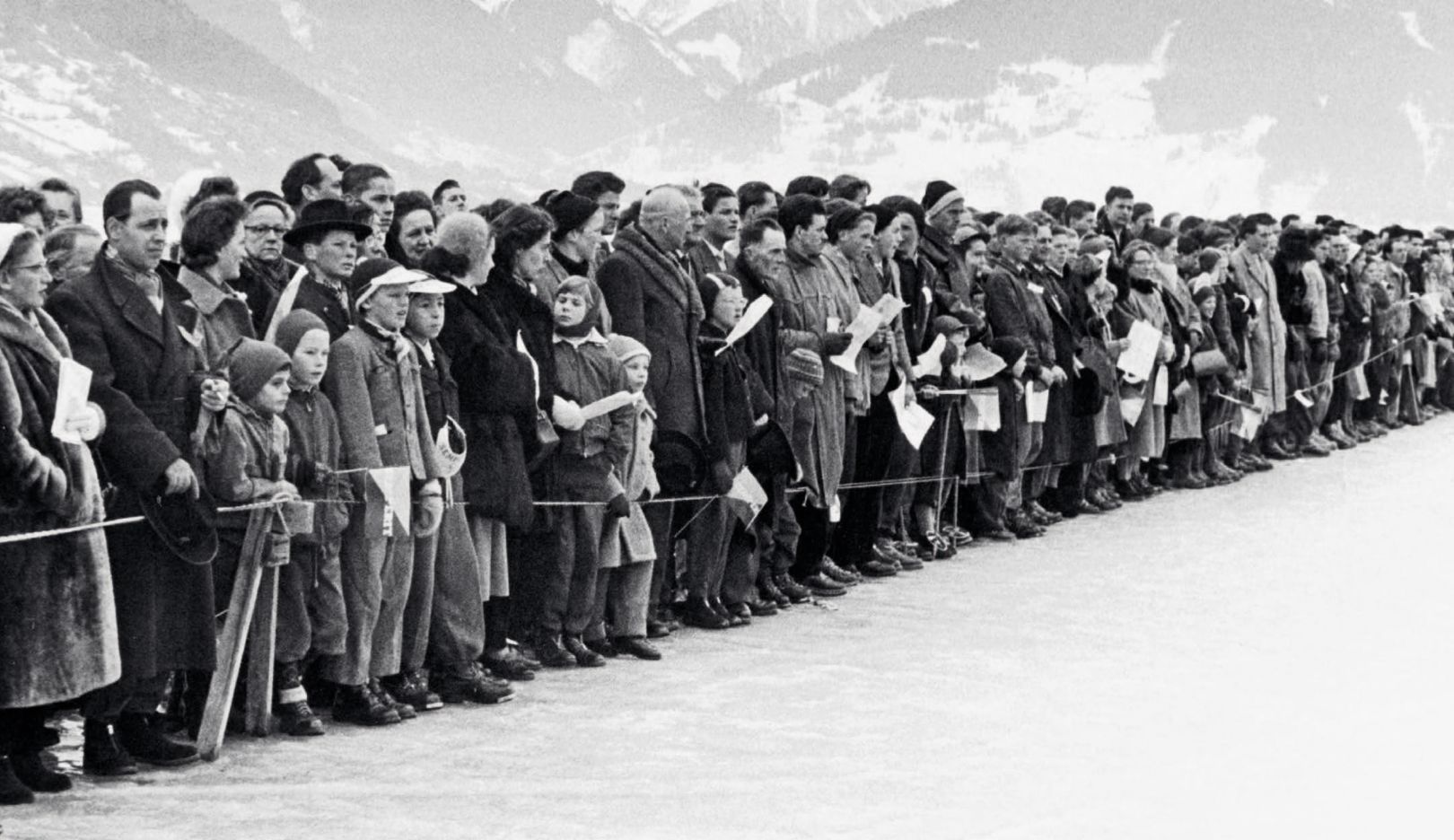
Tightly packed:
A huge number of spectators arrived at the frozen lake. Tense expectancy is written all over their faces.The first Professor Ferdinand Porsche Memorial Race on the improvised course of around 1,800 meters was “a flawless event without any accidents,” according to a report by the Salzburger Nachrichten. In addition to skijoring teams on two wheels and two skis, audacious car drivers also joined the fray. The fastest posted an average speed of fifty-seven kilometers an hour.
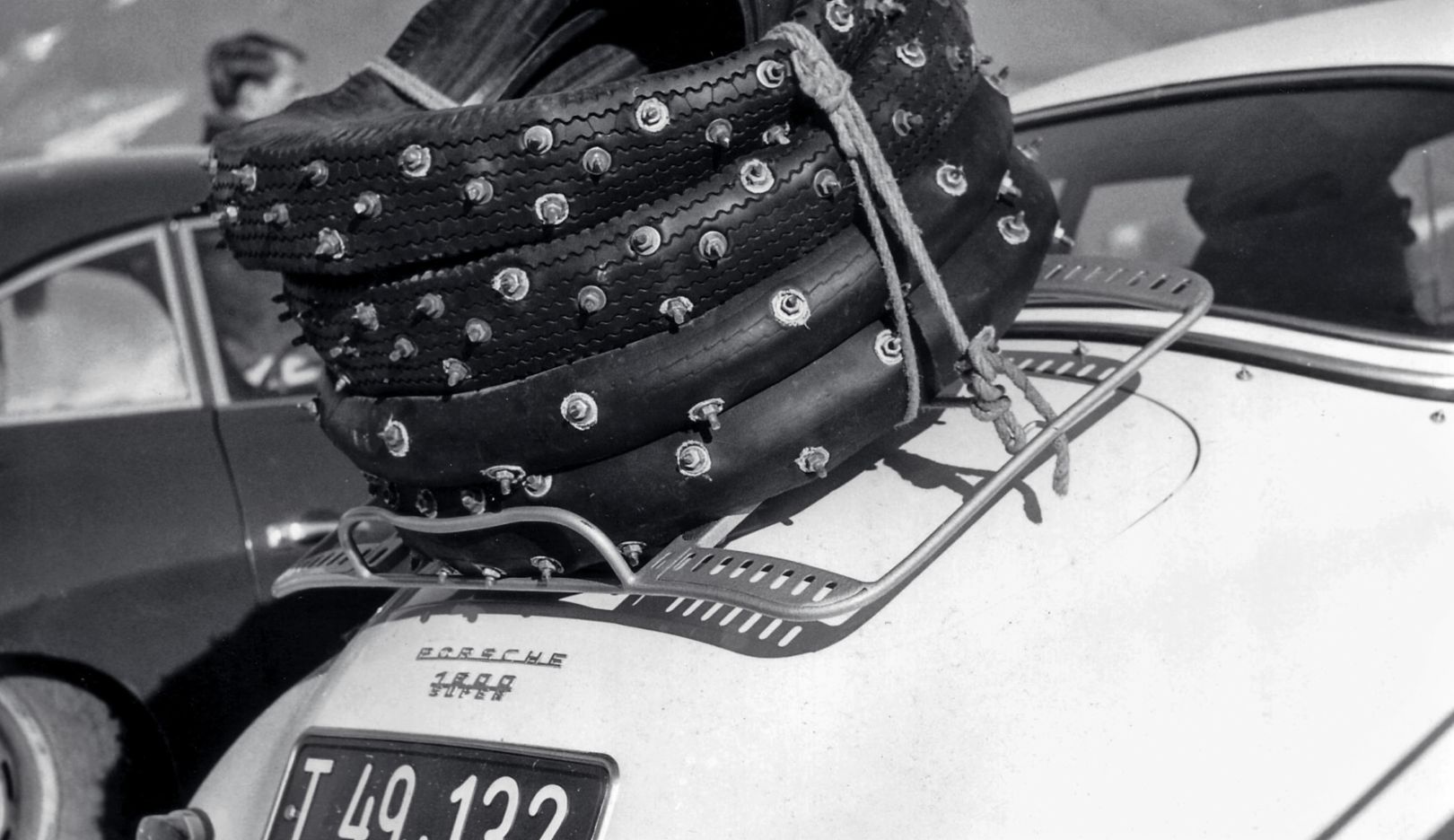
Porsche’s close connections with the region were already evident in numerous ways at the time. The Porsche family had acquired the Schüttgut estate above Lake Zell in 1941, and the company had started a new chapter in its history following the Second World War. Around 130 kilometers away, in the sheds of a former sawmill in the town of Gmünd, the first cars to bear the family name were produced. This was the birth of the Porsche sports-car maker.
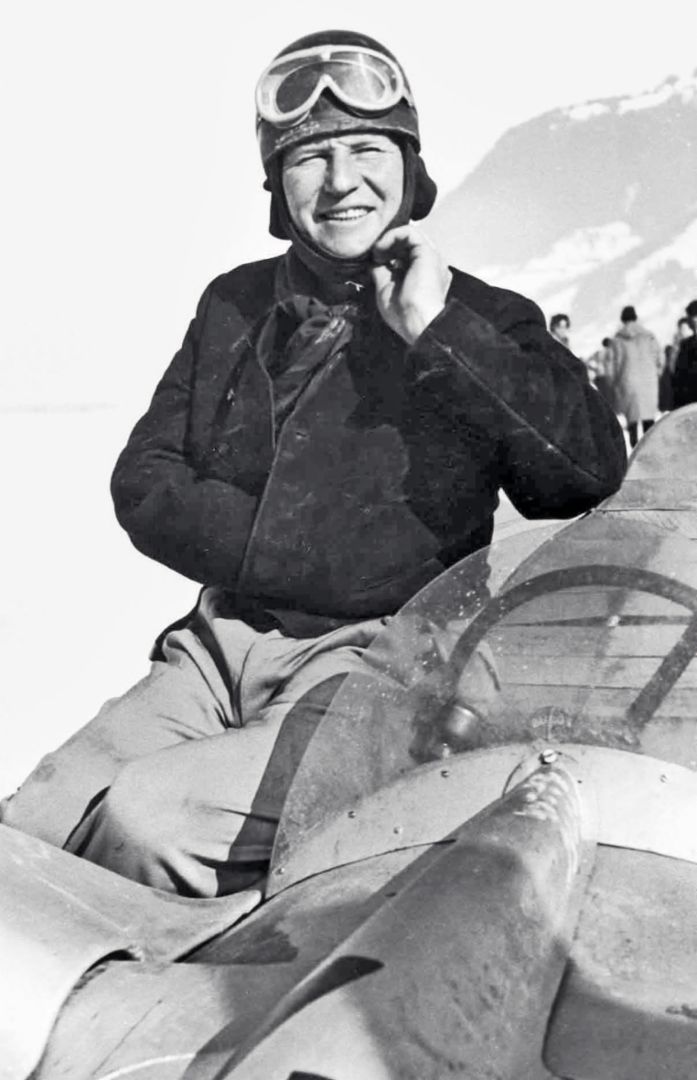
Ice king:
Innsbruck native Otto Mathé and his Fetzenflieger were perennial winners of the ice races.The Porsche memorial race was held again on Lake Zell in 1953. “Forty-eight participants from Austria and Germany competed in thirteen exciting races,” reported the Salzburger Nachrichten this time. The Porsche 356 dominated the field in the car contests. Herbert Kaes, a nephew of Ferdinand Porsche, drove one of them to victory in the 1,500-cc sports-car class. In 1955, this class was won by Huschke von Hanstein, Porsche’s racing director at the time. But the show was stolen by Otto Mathé, who zoomed around the course at ninety-seven kilometers an hour (without a skier). For one thing, his car was a curious Porsche-based vehicle of his own construction nicknamed Fetzenflieger (roughly “shreds on wings”). And the forty-seven-year-old could only use his left arm because of a serious motorcycle accident in the past. “I admired the way he drove the race—with just one arm. And I thought the spikes on his famous ice car were great,” Formula One world champion Niki Lauda once remarked. In 1956, von Hanstein drove a Porsche 550 Spyder in the 1,500-cc class directly against Mathé—and lost.
“I admired the way he drove the race — with just one arm.” Niki Lauda, Formula One world champion
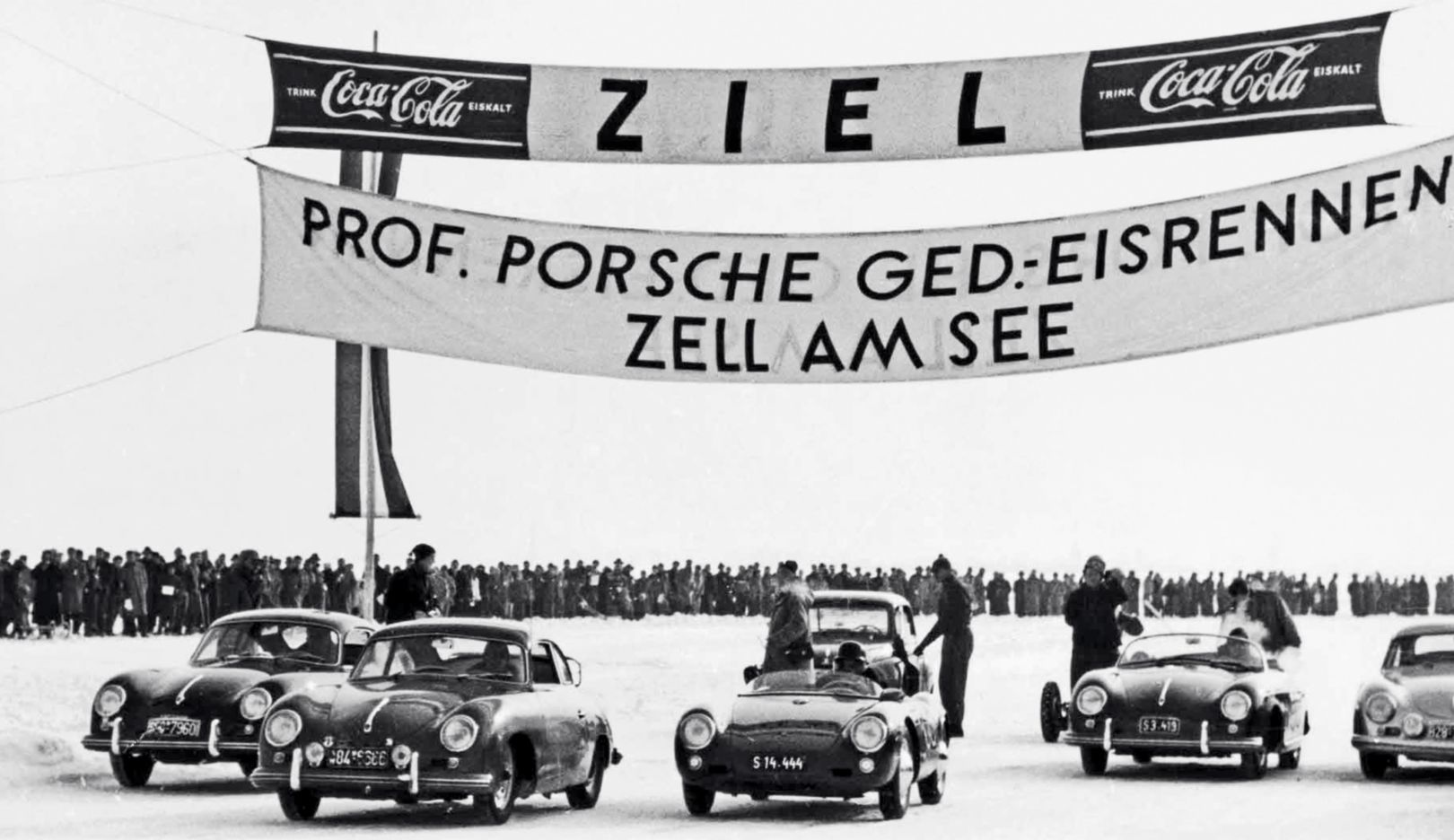
Home game:
Porsches dominated the starting field.The races in Zell am See continued on into the 1970s, when they had to be cancelled several times because the ice was too thin. A calamitous accident took place before the event in 1974, when a snowplow broke through the ice and the driver drowned. The races were then stopped and a unique chapter in racing history came to an end, at least for a while. The contests in honor of Ferdinand Porsche had everything that makes motorsports so appealing: exciting duels, intriguing technology, heroic winners, and tragic losers. And now they have started up again—in 2019 Ferdinand Porsche Jr. and Vinzenz Greger revived this fascinating tradition and held the GP Ice Race on a prepared track at the airfield in Zell am See.
SideKICK: GP Ice Race 2021
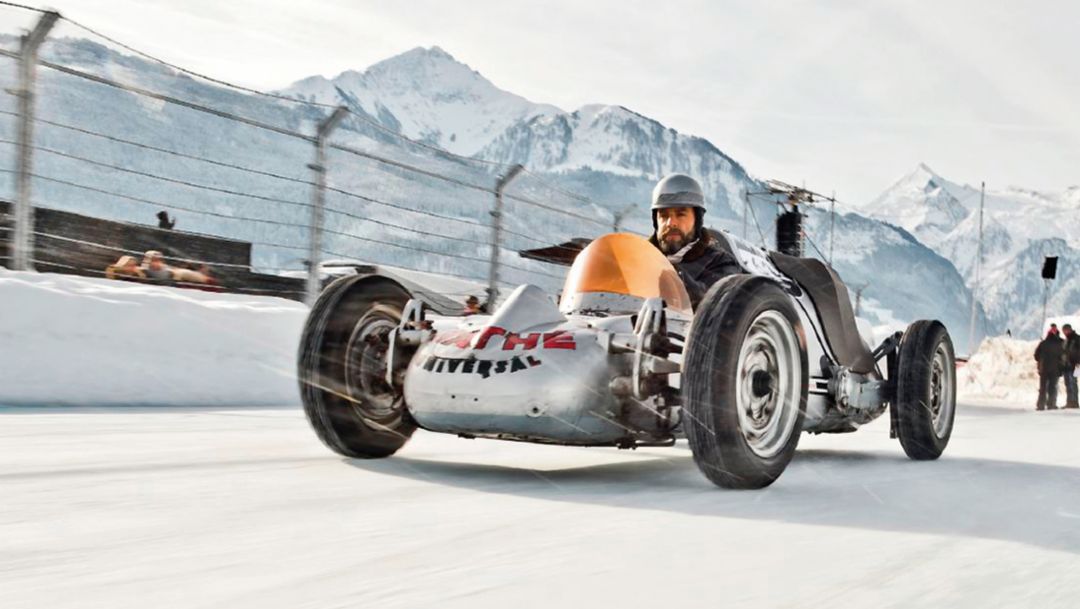
Following two successful events with tens of thousands of spectators, another GP Ice Race will be held in Zell am See in 2021, with COVID-19-appropriate guidelines. Mathé’s historical Fetzenflieger is expected to make an appearance, like it did in 2019. For the latest program information, see gpicerace.com
